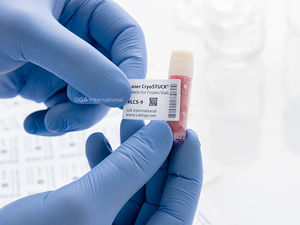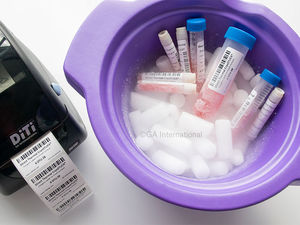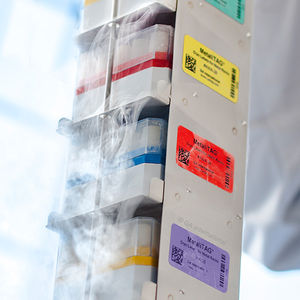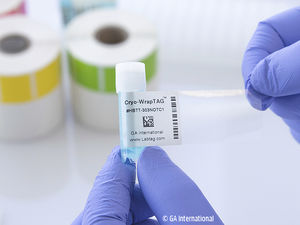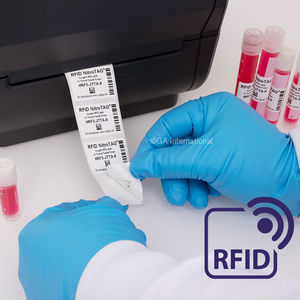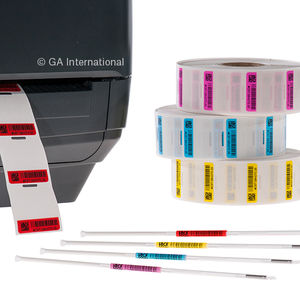
- Laboratory
- Sample management
- Tube label
- GA International

- Company
- Products
- Catalogs
- News & Trends
- Exhibitions
Tube label PinTAG™cryogenicalcohol-resistant

Add to favorites
Compare this product
Characteristics
- Glassware
- for tubes
- Other characteristics
- cryogenic, alcohol-resistant
Description
PinTAG™️ cryogenic labels have a unique, patent-pending, design that allows them to be affixed onto the side and bottom of slim profile, 1.0 ml, 1.4 ml, and 2.0 ml high-throughput /automated sample storage tubes such as Matrix™️, Simport®️ T100-20, LVL technologies LI and LX 1000, and others. They are designed to withstand ultra-low temperature conditions, down to –196°C (-321°F), making them suitable for cryogenic and laboratory freezer storage, as well as transportation on dry ice.
These cryo labels can be affixed onto Matrix tubes that do not have an inherent barcode or where the pre-established information needs to be updated with user-defined barcodes or human-readable information. They are fully compatible with all sample storage tube readers, scanners, and tracking software, as well as automated/robotic liquid handling systems. These labels provide the user with an economical alternative to pre-barcoded vials, allowing them to define and encode their own information, replace damaged or unreadable barcodes, and overwrite or redefine inherent barcodes.
Benefits:
- Simultaneously label the side and bottom of slim profile Matrix tubes (1.0 ml, 1.4 ml, and 2.0 ml) for cryogenic storage (–196°C)
- Compatible with automated high-throughput sample storage and handling systems
- Allows slim profile tubes to be re-labeled easily with barcodes and human-readable information
- Encode identical or custom information onto replicate Matrix tubes without the need for pre-engraved vials
VIDEO
Catalogs
No catalogs are available for this product.
See all of GA International‘s catalogsRelated Searches
- Tag
- Thermal printer
- Tube label
- Desktop printer
- Laboratory printer
- Pharmaceutical industry labeling machine
- Vial label
- Medical printer
- Compact printer
- Cryogenic label
- Multipurpose printer
- Laboratory labeler
- Paper printer
- Heat-resistant label
- Alcohol-resistant label
- Storage bottle label
- Removable label
- Laboratory tube labeling system
- Portable printer
- Vial labeling machine
*Prices are pre-tax. They exclude delivery charges and customs duties and do not include additional charges for installation or activation options. Prices are indicative only and may vary by country, with changes to the cost of raw materials and exchange rates.











